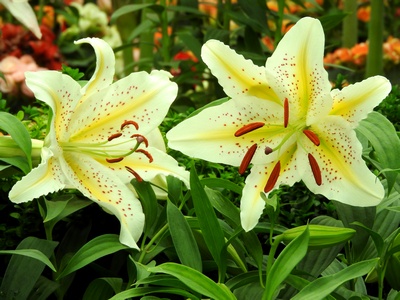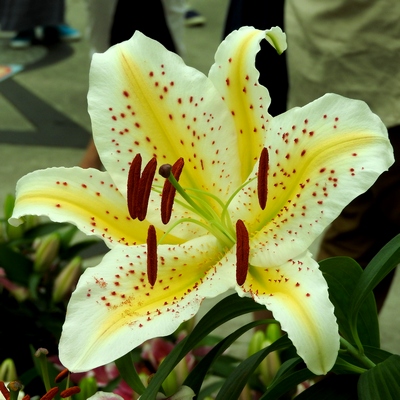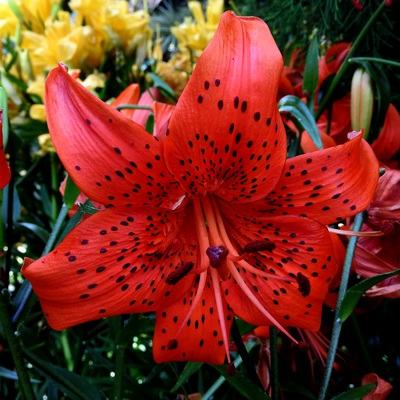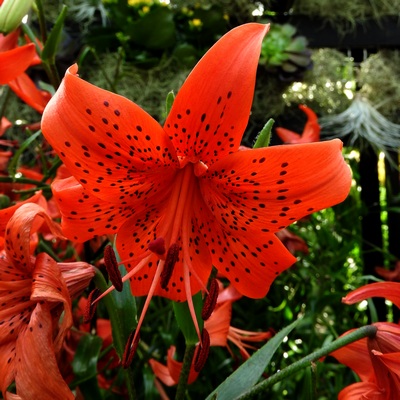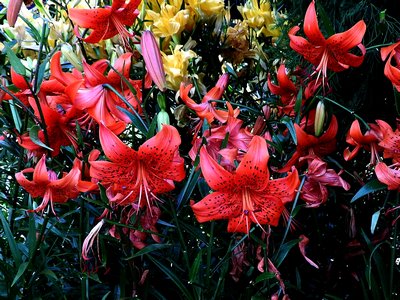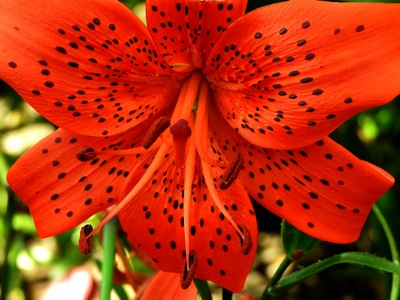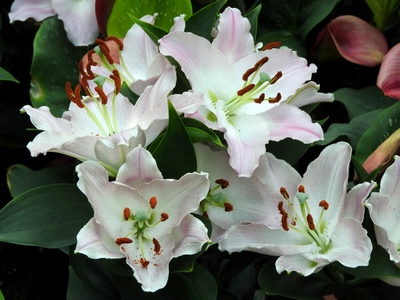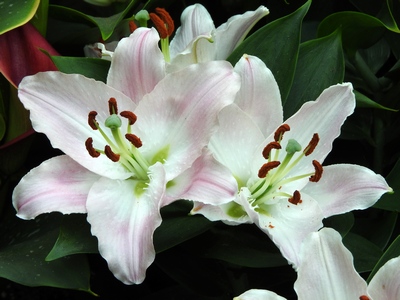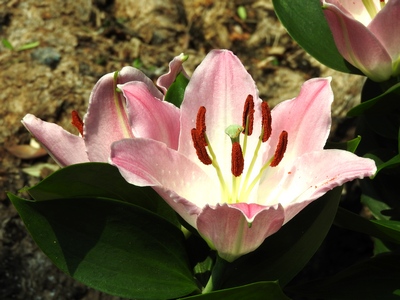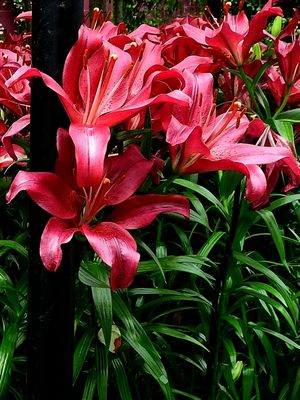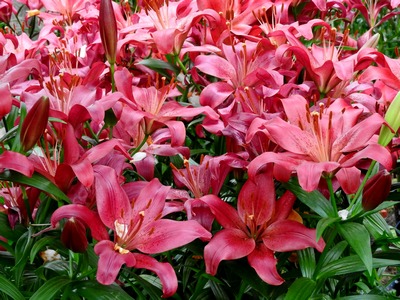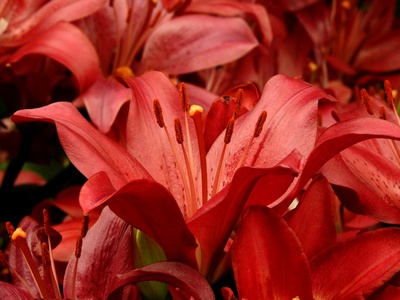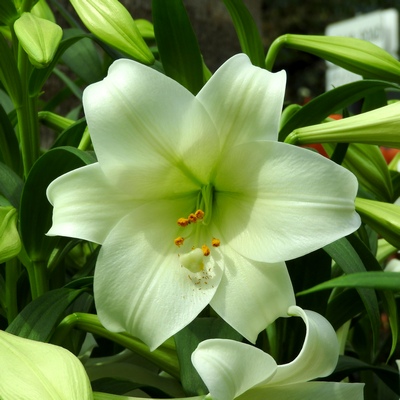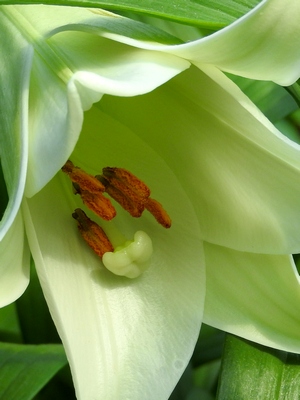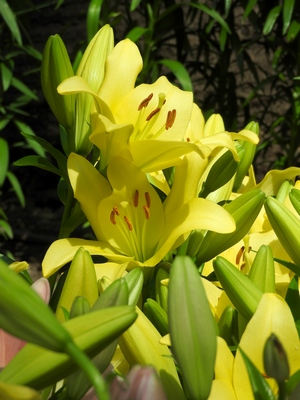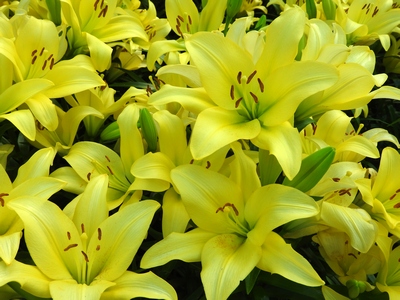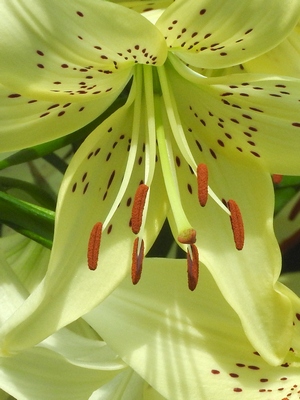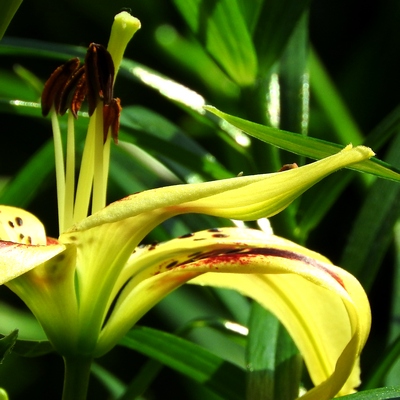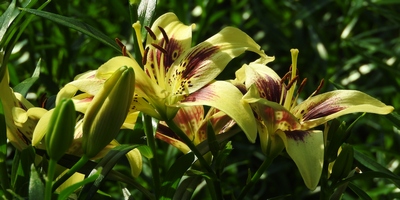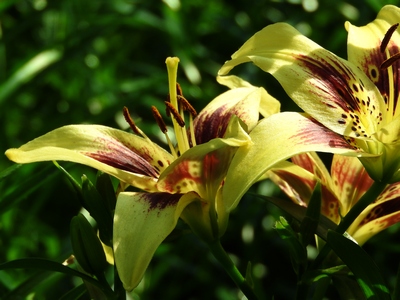Lilium ‘Sumatra’ was one of the first dark Red/Burgundy Oriental Lilies to be introduced. The very large blooms on Sumatra will reach 20 cm in diameter
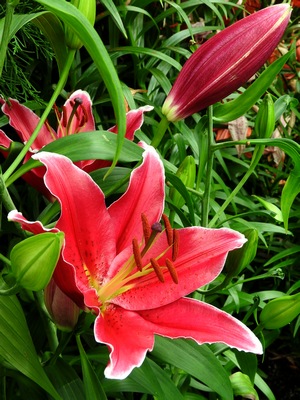
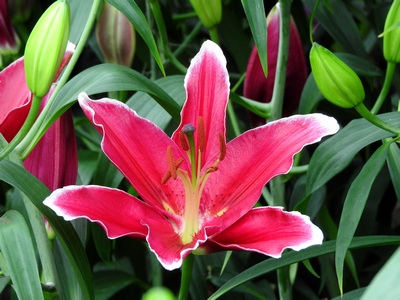
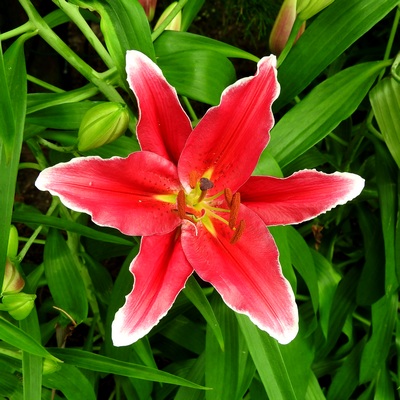
Lilium [members of which are true lilies] is a genus of herbaceous flowering plants growing from bulbs, all with large prominent flowers. Lilies are a group of flowering plants which are important in culture and literature in much of the world. Most species are native to the temperate northern hemisphere, though their range extends into the northern subtropics. Many other plants have “lily” in their common name but are not related to “true” lilies.
Classification of garden forms. Numerous forms, mostly hybrids, are grown for the garden. They vary according to the species and interspecific hybrids that they derived from, and are classified in the following broad groups:
Asiatic hybrids [Division I]: These are plants with medium-sized, upright or outward facing flowers, mostly unscented.
Martagon hybrids [Division II]
These are based on Lilium dalhansonii, Lilium hansonii, Lilium martagon, Lilium medeoloides, and Lilium tsingtauense. The flowers are nodding, Turk’s cap style [with the petals strongly recurved].
Candidum [Euro-Caucasian] hybrids [Division III]
This includes mostly European species
American hybrids [Division IV]
These are mostly taller growing forms, originally derived from Lilium bolanderi, Lilium × burbankii, Lilium canadense, Lilium columbianum, Lilium grayi, Lilium humboldtii, Lilium kelleyanum, Lilium kelloggii, Lilium maritimum, Lilium michauxii, Lilium michiganense, Lilium occidentale, Lilium × pardaboldtii, Lilium pardalinum, Lilium parryi, Lilium parvum, Lilium philadelphicum, Lilium pitkinense, Lilium superbum, Lilium ollmeri, Lilium washingtonianum, and Lilium wigginsii.
Many are clump-forming perennials with rhizomatous rootstocks.
Longiflorum hybrids [Division V]
These are cultivated forms of this species and its subspecies. They are most important as plants for cut flowers, and are less often grown in the garden than other hybrids.
Trumpet lilies [Division VI]
This group includes hybrids of many Asiatic species and their interspecific hybrids, including Lilium × aurelianense, Lilium brownii, Lilium × centigale, Lilium henryi, Lilium × imperiale, Lilium × kewense, Lilium leucanthum, Lilium regale, Lilium rosthornii, Lilium sargentiae, Lilium sulphureum and Lilium × sulphurgale.
The flowers are trumpet shaped, facing outward or somewhat downward, and tend to be strongly fragrant, often especially night-fragrant.
Oriental hybrids [Division VII]
These are based on hybrids within Lilium section Archelirion, specifically Lilium auratum and Lilium speciosum, together with crossbreeds from several species native to Japan, including Lilium nobilissimum, Lilium rubellum, Lilium alexandrae, and Lilium japonicum.
They are fragrant, and the flowers tend to be outward facing. Plants tend to be tall, and the flowers may be quite large. The whole group are sometimes referred to as “stargazers” because many of them appear to look upwards.
Other hybrids [Division VIII]
Species [Division IX]
All natural species and naturally occurring forms are included in this group.
The flowers can be classified by flower aspect and form:
Flower aspect: up-facing, out-facing, down-facing,
Flower form: trumpet-shaped, bowl-shaped, flat [or with tepal tips recurved], tepals strongly recurved [with the Turk’s cap form as the ultimate state]
Photos: Flower Dome, Gardens by the Bay, Singapore [20160618]
Source: Wikipedia
